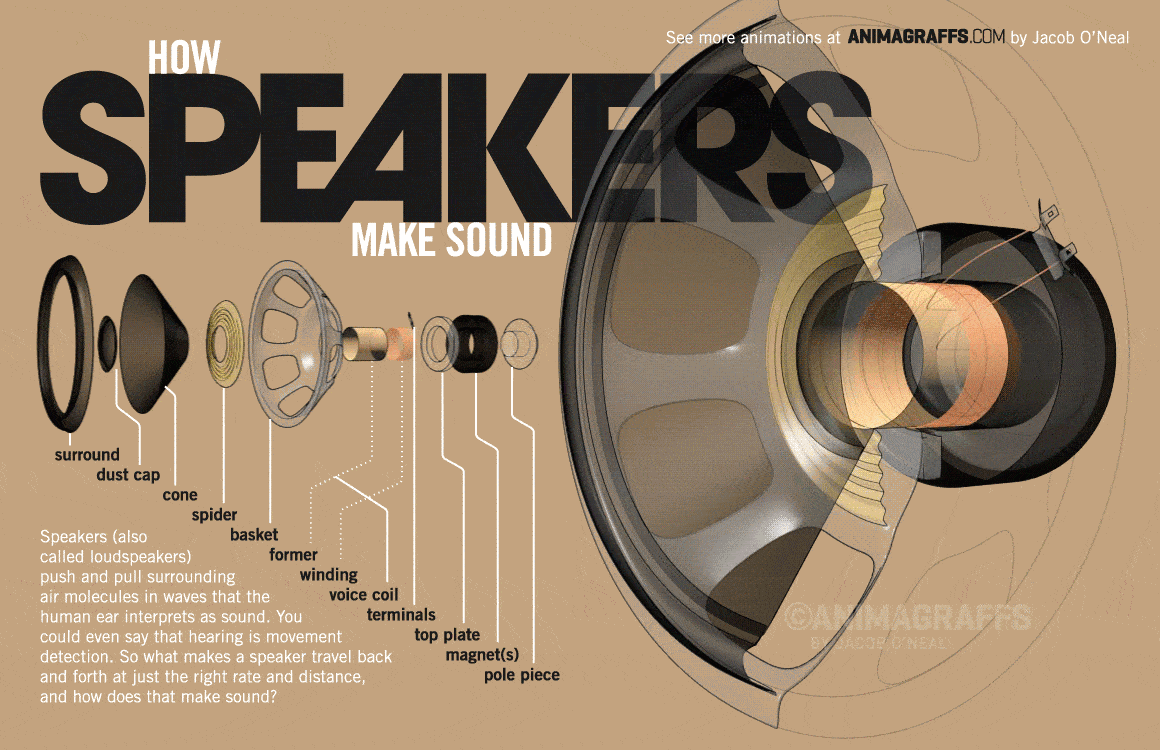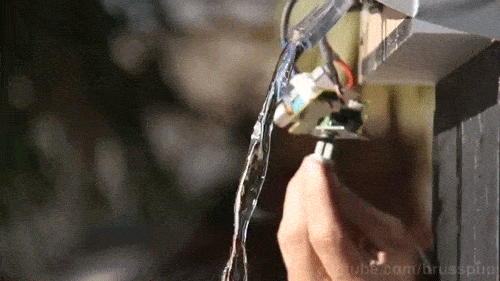Each of us hears the sound from the speakers every day multiple times without even paying attention to it: in a café or pub, in the gym or in transport, at home, etc. But how often do you think of how the speakers actually work? Did you know that their sound can control the element of water? Let’s see what tricks you can perform with the water flow and consider some other features of the speakers.
First, watch this intriguing video, which deals with the flow of water influenced by the speakers.
Fancy, how’s that possible? Let’s look at this mechanism in detail. The dynamic speaker is an instrument necessary for the transformation of the electrical signal into the acoustical one. How can we make the current produce the acoustical waves? You need several school classes of physics to explain this and Ampere’s law in particular. It describes the force that impacts the conductor in the external magnetic field. However, in this case, the alteration of current in the conductor could lead to its spatial movement. So, this basic principle remains us only the choice of the sound unit’s practical realization. The most appropriate speaker scheme is the conductive wire wound on a coil (to increase Ampere’s force) in the magnetic field of a constant magnet.
The coil is connected with the diaphragm which means they will fluctuate with the same frequency. Of course, to make a proper and loud sounding, we need to separate the audio frequency from the acoustical signal and amplify it immensely. But it’s already a different talk.
Difficulties with the sound production don’t step back at this point since the frequency range depends on the size of a diaphragm (it moves towards the low frequencies when increasing the size, and vi?e versa in cases when the speaker is small). Thus, to get a high-quality sound, the complex acoustic systems with several narrow-band speakers are used as they render low, medium and high frequencies separately.
A curious fact is that a speaker’s scheme does not differ from the sound-recording microphone’s working principle. In other words, if you put headphones or speaker-driver of a tape-recorder instead of a microphone, you’ll get the same effect: transformation of acoustical fluctuations into an electrical signal. Although the quality can be significantly worse, the experiment will succeed. Music recording studios, for instance, use more advanced microphones which have piezoelectric transducer. The principle of their work lies in the voltage alteration on the borders of piezoelectric crystal during its mechanical stress.
Now, when we’ve got the idea of how the speakers work, we can go back to the video experiment which deals with water.
We have a speaker, a low frequency signal (23-25 Hz) generator and a camera with 24 fps (frames per second). Rubber hose with water fluctuates with a frequency given be the generator that will result in periodical spatial structure within the flow of water. The stroboscopic effect is shown depending on the correlation between the camera frame frequency and the flow vibration. It means that if the sound frequency equals 24 Hz, the camera will show water drops in the same place every moment like in a frozen picture. But if the sound frequency is faster than the frequency of frame, the drops manage to overcome the bigger distance while we shoot it and thus we observe very slow flow of water. However, the most fascinating thing happens when the sound frequency is lower than frame frequency. In this case, we see the water coming… up!




